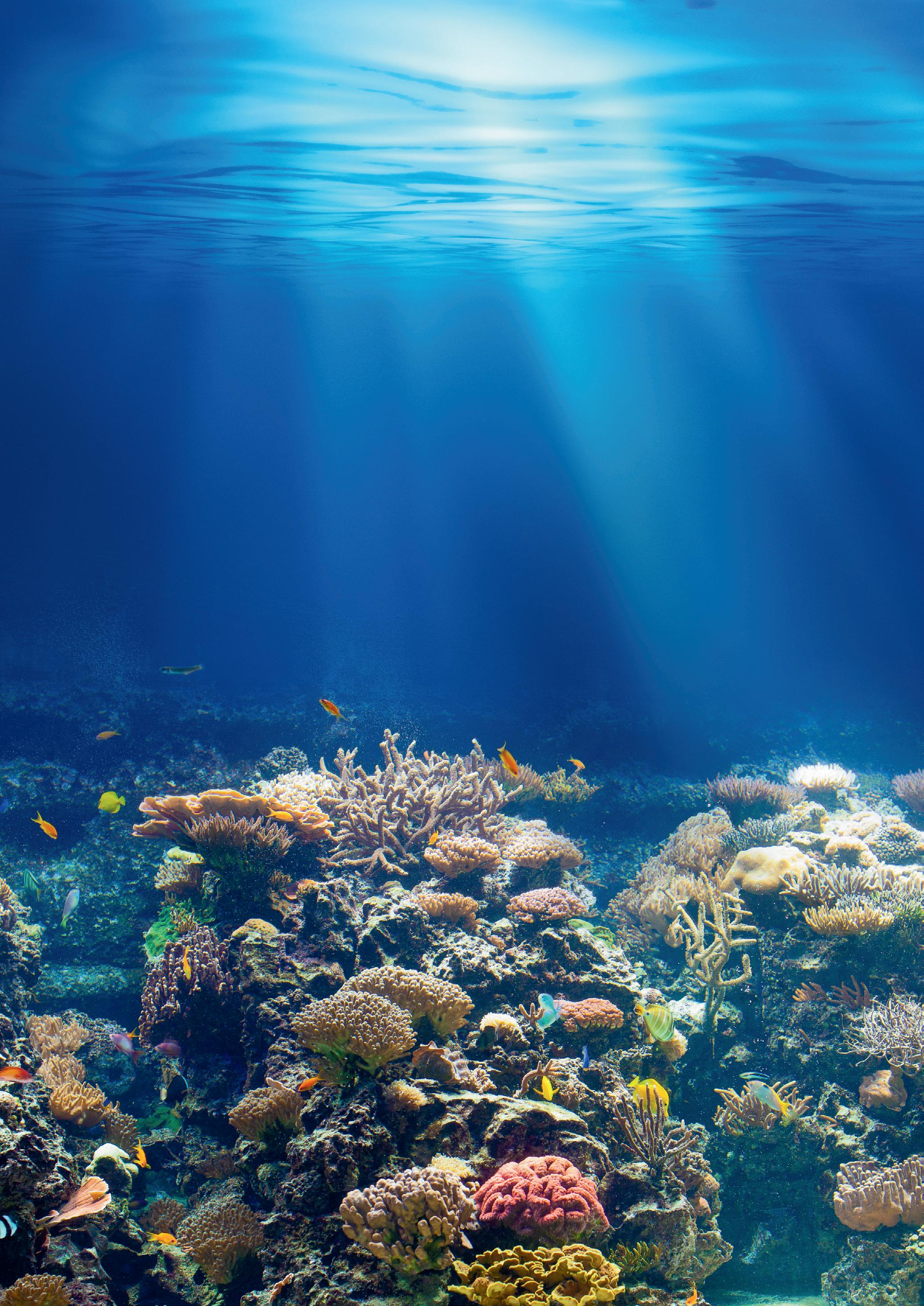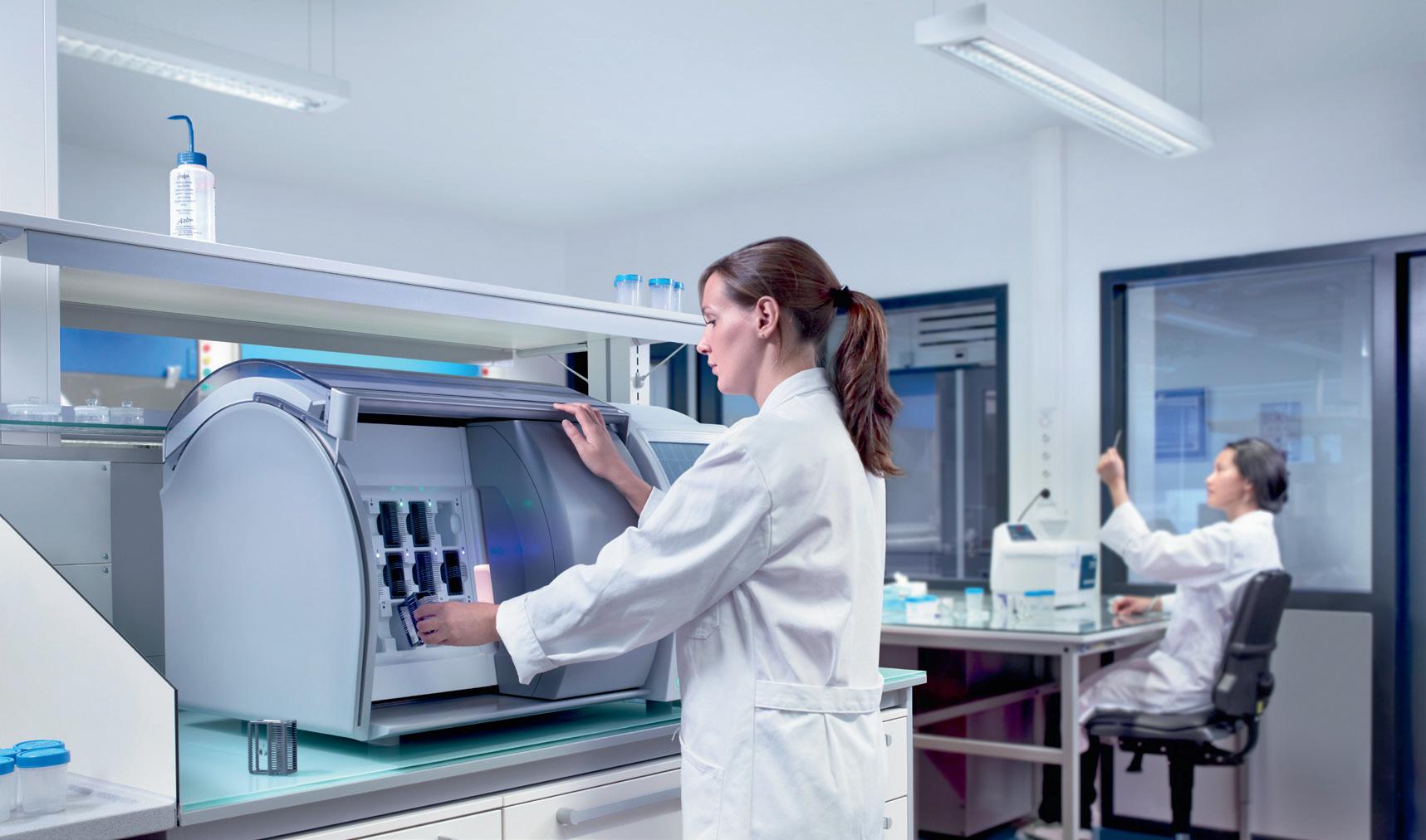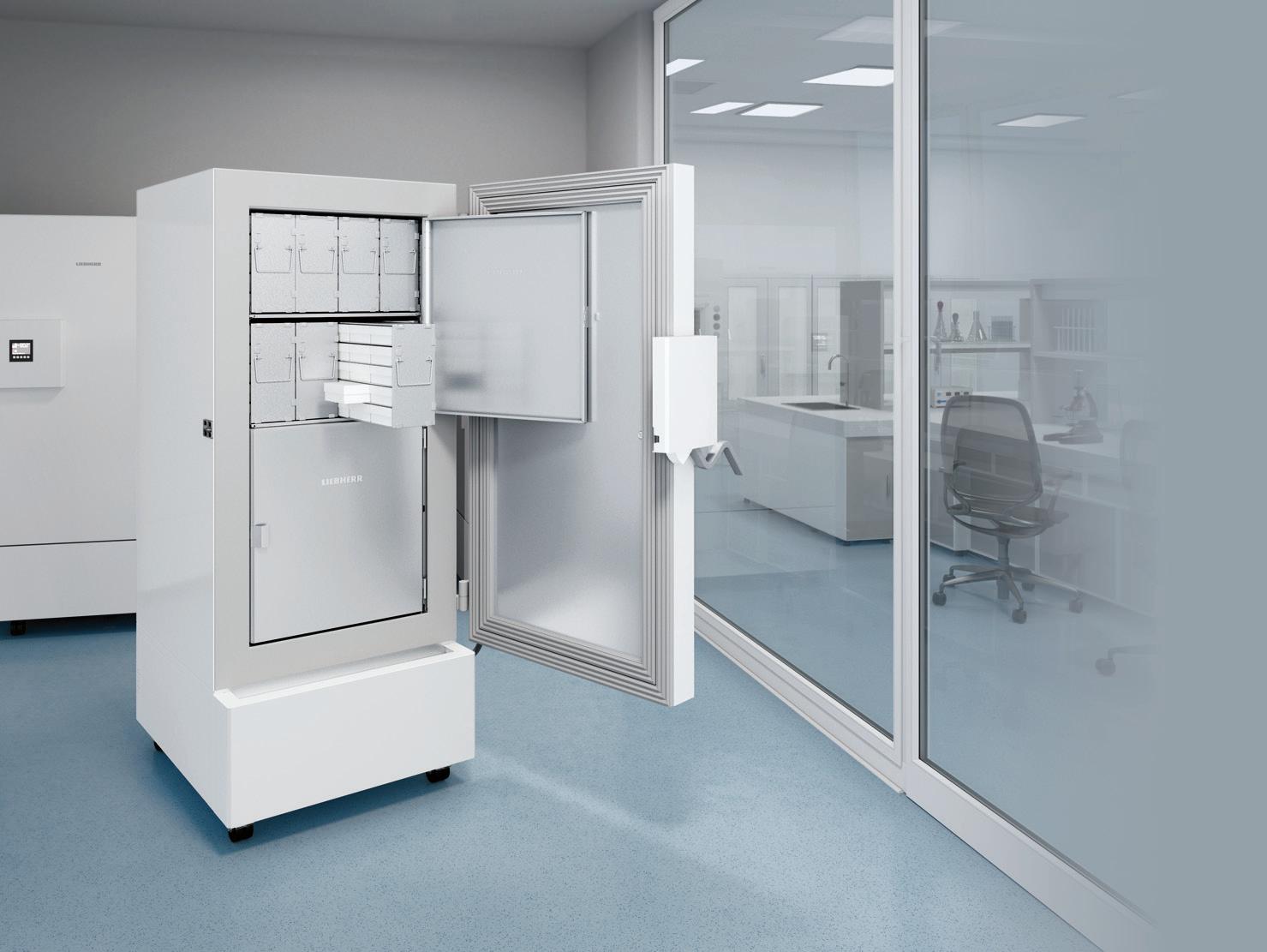
9 minute read
SOME CORAL REEFS DEMONSTRATE TOLERANCE TO OCEAN WARMING
A research team led by the Woods Hole Oceanographic Institution (WHOI) has found that some coral communities are becoming more heat tolerant as ocean temperatures rise, offering hope for corals in a changing climate. Their work has been published in the journal Geophysical Research Letters.
Just like on land, heatwaves underwater are becoming more frequent and intense as the world warms, putting stress on ocean ecosystems. High temperatures hit coral reefs especially hard by causing widespread bleaching events, where corals eject the symbiotic algae in their tissues, further weakening the animals. With continued ocean warming, coral reefs face a dim future. Some corals, however, are more adept at managing heat stress than others.
In the new study, researchers used daily satellite data and temperature loggers to monitor coral communities at four islands within the Phoenix Islands Protected Area (PIPA), an area encompassing over 400,000 km2 of coral reef and deep-sea habitat in the central Pacific Ocean. The Republic of Kiribati established the reserve in 2008 and the United Nations Educational, Scientific and Cultural Organization (UNESCO) designated PIPA as a World Heritage Site in 2010.
“The protected area gives us a rare opportunity to study pristine and isolated coral reef ecosystems, a privilege for which we thank the people of Kiribati,” said study co-author Anne Cohen, a marine scientist at the WHOI.
After a 2002–2003 heatwave, the surveyed sites lost more than three-quarters of their coral cover. The reef was beginning to recover when another heatwave hit in 2009–2010, sparking fears of widespread bleaching, but two years later coral cover had increased by more than 5%. Following the ‘Super El Niño’ in 2015–2016, which raised ocean temperatures by 3°C, the loss of coral cover was 40% — about half of the 2002 losses, despite causing twice the level of thermal stress. The study authors have ruled out 11 environmental factors that might explain the higher-than-expected survival following the 2009–2010 and 2015–2016 heatwaves, such as greater cloud cover or more gradual warming.
“It’s easy to lose faith in coral reefs,” said first author Michael Fox, a postdoctoral scientist and coral reef ecologist at the WHOI. “But in PIPA, which is protected from local stressors, and where reefs have enough time to recover between heatwaves, the coral populations are doing better than expected.
At other reefs worldwide, sometimes only a handful of especially hardy or fast-growing species recover after a bleaching event. Coral larvae can float long distances on ocean currents, but due to PIPA’s isolation, the researchers hypothesise that heat-tolerant offspring from the surviving corals are repopulating the reefs, allowing the community to keep pace with warming seas — at least for the time being.
“We’re seeing areas that were devoid of corals after 2002–2003 that are now flourishing with most of the original species,” Fox said.
The study could help coral reef managers identify coral communities most likely to survive in the warming ocean, with the team’s next step being to figure out how they are doing it. And they are not the only ones embarking on such an endeavour, with a separate research team recently revealing how thermally tolerant corals have different mechanisms for responding to heat stress — and how identifying and researching these different heat stress response patterns will help to protect the world’s reefs.
In order to elucidate the factors that contribute to higher thermal tolerance in corals, Professor Christian Voolstra from the University of Konstanz and colleagues introduced a new mobile testing system last year — the Coral Bleaching Automated Stress System (CBASS). The system makes it possible to quickly identify corals that are particularly resilient.
“It allows researchers and conservationists alike to assess coral resilience anywhere on Earth and to find out how endangered each coral reef is, without the need for costly and sophisticated tech,” Prof Voolstra said.
In their current study, the research team used CBASS to evaluate the thermal tolerance of the smooth cauliflower coral (Stylophora pistillata) in different regions of the Red Sea. The results show that corals from the Gulf of Aqaba, the most north-eastern arm of the Red Sea, demonstrate a remarkable thermal tolerance — up to about 7°C above the respective maximum monthly average for the warmest summer month — just like their peers from the central part of the Red Sea. However, the absolute thermal tolerance of smooth cauliflower corals from the central part of the Red Sea is up to 3°C higher than for the same species in the Gulf of Aqaba, which could suggest that different tolerance mechanisms are at work.
In order to investigate this possibility, the research team conducted molecular analyses to elucidate mechanisms of thermal tolerance in corals from the different locations. Genetic examinations showed that smooth cauliflower corals from the Gulf of Aqaba respond to heat stress with a strongly altered gene expression — for example, the increased production of certain proteins. Parallel to this, the composition of the coral-associated bacterial communities changed. By comparison, corals from the central part of the Red Sea did not exhibit any of these changes when exposed to heat stress.
The molecular results, published in the journal Molecular Ecology, support the idea that smooth cauliflower corals have different thermal tolerance mechanisms. According to Prof Voolstra, “We interpret the response of the corals from the Gulf of Aqaba as that of a ‘resilient’ population that directly and proportionally reacts to increases in temperature. By contrast, the more static expression of genes of the corals from the central part of the Red Sea indicates a fixed reaction norm, irrespective of the heat stress applied, which provides ‘resistance’ to high water temperatures, but at the cost of the ability to flexibly respond to further increases in temperatures.”
At the moment, it is unclear which of these tolerance mechanisms protects corals better from the global increase in ocean temperatures caused by climate change. The fact that ‘resilient’ and ‘resistant’ tolerance mechanisms can be distinguished using molecular methods could be of great importance for the conservation prioritisation of existing coral reefs or for restoration approaches that could use heattolerant corals for sexual propagation. For this reason, the research team is making plans to employ the methodological approach used successfully in the Red Sea study around the world.
“Our study shows the tremendous value of an integrative, combined approach: using the CBASS system for the standardised identification of thermal tolerance in corals with subsequent follow-up molecular analyses to identify the underlying tolerance mechanisms and marker genes,” Prof Voolstra said.
Philips helps Healius deploy a digital pathology system
Health technology company Royal Philips has announced that it has partnered with Healius Pathology, a provider of private medical laboratory and pathology services, to deploy a multisite digital pathology system using the Philips IntelliSite Pathology Solution.
Limited in time and resources and expected to accomplish more at lower costs, pathology departments need to find new ways to adapt. Before the pandemic, diagnostic services were already burdened with high demand and inefficient workflows. In the face of COVID-19, the need for greater efficiency and responsiveness has become even more urgent. As a result, pathology is beginning to transform into a digital discipline, bringing exciting new possibilities that can aid, streamline and enhance diagnostic and clinical decision-making.
Digital pathology aims to reduce pressure on pathology services by streamlining workflow and extending collaboration to increase diagnostic confidence. The Philips IntelliSite Pathology Solution is highly scalable, with technology that should enhance productivity with high-resolution digital images, collaborative features and case management tools. It is designed to support clinical practice, improve patient care and reduce healthcare costs.
A pathological review of patient tissue has historically been done using a microscope. Pathologists can now gain new insights through real-time collaboration with Image Management System (IMS) software and algorithms designed to aid, streamline and maximise diagnostic confidence. Using the Philips IntelliSite Pathology Solution, Healius pathologists can digitise their workflow with consistently high image quality and fast, first-time-right scanning capabilities.
Deanne Broughton, General Manager of Healius Pathology’s Veterinary division, SVS Pathology Network, is excited about the new solution’s quality and versatility. She said, “It is an exciting time for our national veterinary business to begin the rollout of this new digital pathology solution. This new solution will deliver many things for our business, with the most important being simplicity and ease for our practitioners and our patients.”
The solution will initially be rolled out through Healius Pathology’s National Pathology Division, with the ultimate goal of providing easy and immediate access to medical and veterinary pathology information across the business — allowing clinicians to make timely decisions about patient care. John McKechnie, Healius Pathology CEO, said, “Once deployed across our business, the new solution will create a virtual pathology network that will reinvent the pathologist experience, improving turnaround time and enabling increased quality and versatility of the digital image provided to pathologists for interpretation and diagnosis.”
Matt Moran, Managing Director of Philips in Australia & New Zealand, concluded, “Philips is using its unique position as a long-established innovator focused on serving our customers’ needs with many solutions to bring together people, technology and data into a more seamless workflow across the health continuum. Through the digitisation of pathology, we aim to break boundaries, reduce complexity and deliver meaningful innovation to help our customers achieve diagnostic confidence and better patient care.”

Philips Healthcare www.philips.com.au/healthcare
Mass flow meter for dosing of corrosion inhibitors
In industrial applications, especially in the chemical, process and oil and gas industry, corrosion can be a real challenge. These types of industries are coping with demanding environmental and process conditions in production and operation. Prevention or control of corrosion by inhibiting often proves to be an economic solution.
A corrosion inhibitor system will add small concentrations of (bio)chemicals into the process. The effectiveness of an inhibitor system greatly depends on the correct injection amount and can be influenced by the environmental and process conditions, so accuracy is crucial.
Using a low-flow control system containing a Bronkhorst CORI-FLOW (mini) mass flow meter can help to manage the dosage of corrosion inhibitors. The flow meter is designed to achieve high accuracy and high turndown ratio based on pure mass flow measurement. It can directly control valves and pumps by onboard PID control and can be further optimised with PLC and HMI control extending both performance and flexibility.
Bronkhorst’s Coriolis dosing system approach enables realtime monitoring, control and logging of injection rates. This allows online checking of flow rates and instantaneous resetting of the required flow rate. Asset management and preventive maintenance are supported with several active diagnostics.
AMS Instrumentation & Calibration Pty Ltd www.ams-ic.com.au


Safe Storage at Ultra Low Temperatures
Setting the benchmark in the temperature range of -40°C to -86°C, our new ULT Freezers are engineered to store highly sensitive substances that meet the special safety & hygiene regulations required for vaccines!
home.liebherr.com.au
Laboratory & Pharmaceutical
Distributed by:


Contact Us: 1800 685 899






